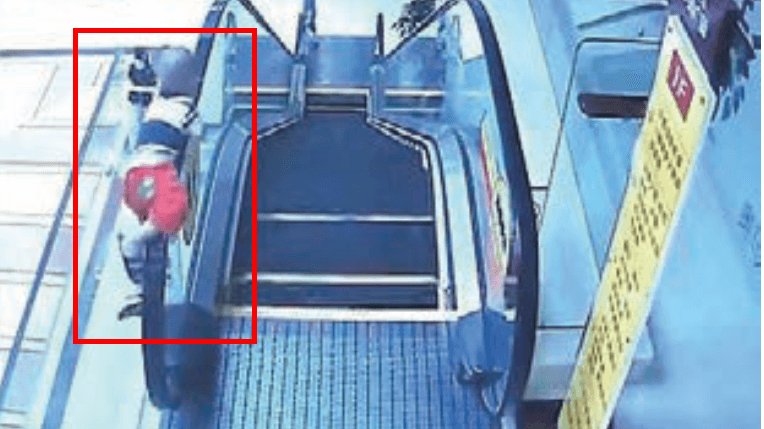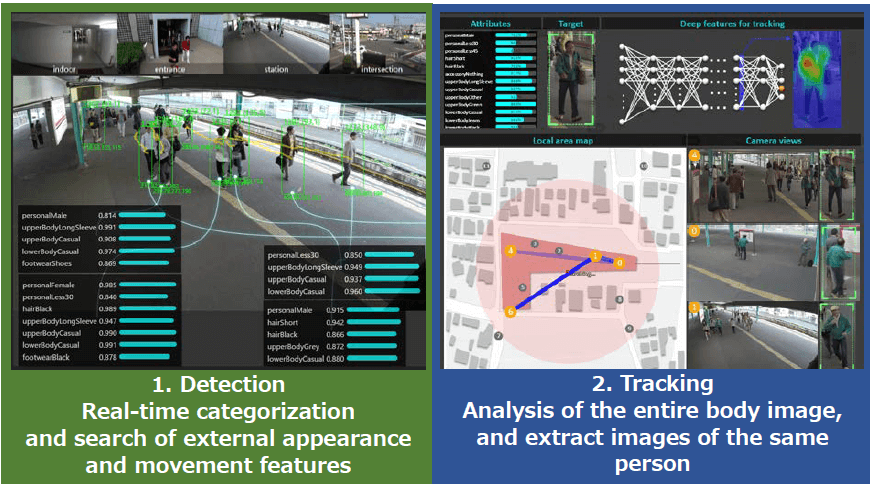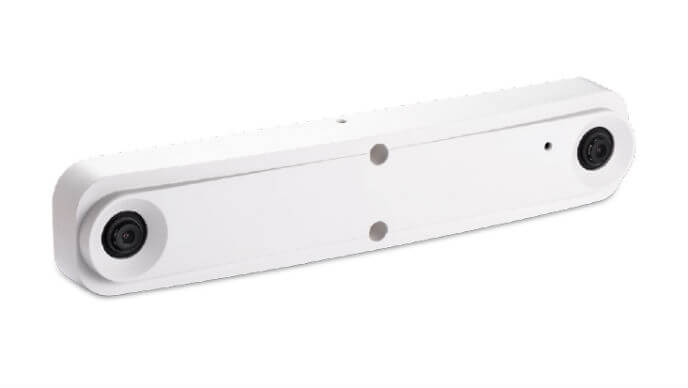The introduction of artificial intelligence (AI) and machine learning has changed the way surveillance is being viewed.
The introduction of artificial intelligence (AI) and machine learning has changed the way surveillance is being viewed. Being able to perform analytics and determine the next best step can greatly enhance security and increase safety. Sectors such as retail could also benefit from AI such as performing people counting to determine highest point-of-sale area. For this article, we selected several companies which offers AI and machine learning technology.
Vi Dimensions ARVAS Smart Surveillance System
 Vi Dimensions ARVAS Smart Surveillance System
Vi Dimensions ARVAS Smart Surveillance System
The ARVAS system utilizes machine learning to automatically analyze hours of data to find potential threats and unusual patterns. It reduces false alarms and increases the detection of potential threats based on the detection of new anomalies. With machine learning, the system simultaneously analyzes multiple moving figures such as in crowded areas. All this can be done without the user specifying rules for finding abnormalities and threats, which greatly reduces the need for a human operator to monitor every scene. ARVAS can be integrated with existing cameras, video management and video analytics systems to effectively enhance the overall surveillance network.
Learning from its environment, the system can pick up on incidences such as aggressive behavior or suspicious activities like loitering or someone carrying unusually large objects. The AI can also help increase safety by spotting mischievous behaviors like children jumping over barricades, barriers or entering unsafe and restricted zones. By further increasing productivity for operators, the AI will automatically list the top 10 abnormal events based on the camera or geographic location so the user can focus on the next step of action.
Ultinous Alert Platform for Retail

Increasing revenue and reducing losses are important considerations in the retail sector.
Ultinous Alert Platform gives retailers accurate live information of what is happening in stores. Customers entering the store can be counted and peak trading times tracked. The system can then determine the ideal number of staff needed in a particular area, reducing the number of unacceptable queues, which in turn improves sales and customer experience. Alert Platform can also identify returning customers, while security can be alerted if any known offenders are spotted.
Ultinous has developed deep learning-based computer vision technologies to analyze large amounts of video footage in recordings, real time or images. The technology enables thorough people counting by tracking the heads of each individual, even with head sizes as small as 30 x 30 pixels. An imaginary line is used to count people and it is able to accurately record simultaneous crossings, making the system capable of achieving 99-percent accuracy. On top of people counting capabilities, the technology can perform facial recognition without the need for each person to look at the camera. To improve accuracy, the system gathers every frame that belongs to the person it’s tracking.
Hitachi Image Analysis Technology for Real-Time People-Detection and Tracking
 Hitachi detection and tracking technology
Hitachi
Hitachi detection and tracking technology
Hitachi is currently developing a real-time detection and tracking technology using AI to distinguish individuals using more than 100 characteristics related to 12 types of appearances including sex, age, hair color, type of clothing and items being carried. Movement characteristics derived from 10 categories can also be detected including walking, running and bending. Each category can be calculated simultaneously by the AI, which increases the speed of detection.
To further increase detection and tracking accuracy, the AI is able to analyze and convert a full body image into a numerical description. This way the AI will be able to recognize the target regardless of the body angle or lighting of the image. Based on the result of running the AI analysis in a database with high-speed vector processing, the system was able to find its target through thousands of images in less than one second.
Everseen Point-of-Sale Video Analytics
 Everseen
Everseen developed a solution to track point-of-sale activities in order to decrease fraud and errors in the retail sector. The proprietary AI algorithms, computer vision and big data are combined to detect irregular actions. It will identify non-scanning activities by applying video analytics and data to existing point-of-sale video and data stream. The AI can detect if an item is scanned correctly or if a mistake was made by the point-of-sale operator. Other features include irregular void and refund and basket-based loss.
The system’s AI will determine the incident from video footages and other point-of-sale data. Detection of events is done by state-of-the-art video intelligence as well as image processing and recognition algorithms. Any point-ofsale anomaly the system finds will be reported to the operator. All the video footages are uploaded to Everseen’s cloud-based servers and the proprietary technologies provides maximum security during the process. To ensure secure protection, the data is kept in a redundant storage at multiple physical locations.
Xovis PC3 3D Stereo Vision Person Tracking Sensor
 Xovis PC3-Model
Xovis PC3-Model
Counting the number of humans on a video stream can be a difficult task especially in crowded areas.
Xovis PC3 3D Stereo Vision Person Tracking Sensor takes away the challenge of counting every person in the footage by accurately tracking and counting each person that appears in the sensor’s vicinity. Up to nine sensors can be quickly configured and the system is able to track people from one sensor to another without the use of additional hardware or software. The sensor gives each person his own ID once he enters the area being covered, allows up to 99 independent counting lines, and monitors forward and backward crossings.
PC3 sensors can also configure and monitor up to eight zones with a single sensor. It can give the number of occupants in a particular zone. The zone can be used as an activation area where a dedicated counting performs a logical function. Real-time analytics is processed by the sensor itself without the need for a video stream.